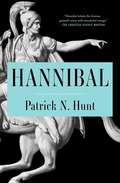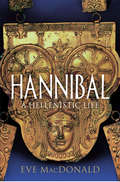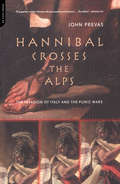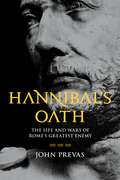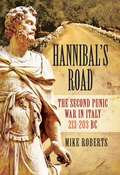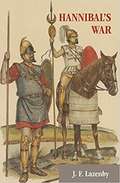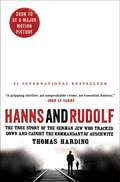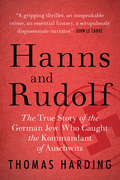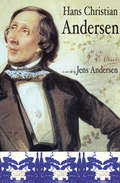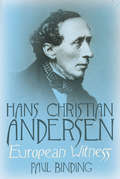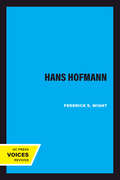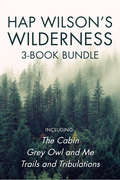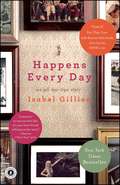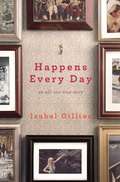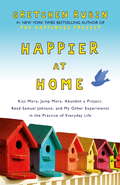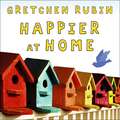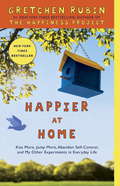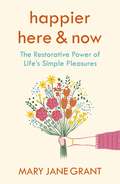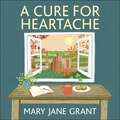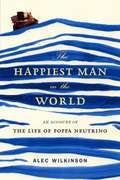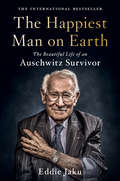- Table View
- List View
Hannibal
by Patrick N HuntHannibal is &“an exciting biography of one of history&’s greatest commanders…a thrilling page-turner&” (Kirkus Reviews, starred review) about the brilliant general who successfully crossed the Alps with his war elephants and brought Rome to its knees, and who is still regarded today as one of the greatest military strategists in history.Hannibal Barca of Carthage, born 247 BC, was one of the great generals of the ancient world. His father, Hamilcar, imposed Carthaginian rule over much of present-day Spain. After Hamilcar led the Carthaginian forces against Rome in the First Punic War, Hannibal followed in his father&’s footsteps. From the time he was a teenager, Hannibal fought against Rome. He is famed for leading Carthage&’s army across North Africa, into Spain, along the Mediterranean coast, and then crossing the Alps with his army and war elephants. Hannibal won victories in northern Italy by outmaneuvering his Roman adversaries and defeated a larger Roman army at the battle of Cannae in 216 BC. Unable to force Rome to capitulate, however, he was eventually forced to leave Italy and return to Carthage when a savvy Roman general named Scipio invaded North Africa. Hannibal and Scipio fought an epic battle at Zama, which Hannibal lost. Many Carthaginians blamed Hannibal, who was exiled until his death. Hannibal is still regarded as a military genius. Napoleon, George Patton, and Norman Schwarzkopf, Jr. are only some of the generals who studied and admired him. His strategy and tactics are still taught in military academies. &“With wonderful energy…archeologist and historian Patrick Hunt distills his survey of literature about the Second Punic War into a brightly dramatic story that covers virtually every anecdote connected with Hannibal&” (The Christian Science Monitor). &“Hunt&’s story of the doomed general, whose exploits are more celebrated than those of his vanquishers, will appeal to any reader interested in military history or strategy&” (Publishers Weekly).
Hannibal: A Hellenistic Life
by Eve MacDonaldThe life of the great Carthaginian general who marched into Rome during the Second Punic War is reexamined in this revealing and scholarly biography. Once of the greatest military minds of the Ancient World, Hannibal Barca lived a life of daring and survival, massive battles, and ultimate defeat. A citizen of Carthage and military commander in Punic Spain, he famously marched his war elephants and huge army over the Alps into Rome&’s own heartland to fight the Second Punic War. Yet the Romans were the ultimate victors. They eventually captured and destroyed Carthage, and thus it was they who wrote the legend of Hannibal: a brilliant and worthy enemy whose defeat represented military glory for Rome. In this groundbreaking biography, Eve MacDonald employs archaeological findings and documentary sources to expand the memory of Hannibal beyond his military career. Considering him in the context of his time and the Carthaginian culture that shaped him, MacDonald offers a complex portrait of a man from a prominent family who was both a military hero and a statesman. MacDonald also analyzes Hannibal&’s legend over the millennia, exploring how statuary, Jacobean tragedy, opera, nineteenth-century fiction, and other depictions illuminate the character of one of the most fascinating figures in all of history.
Hannibal Crosses the Alps: The Invasion of Italy and the Punic Wars
by John PrevasWhen he left his Spanish base one spring day in 218 B. C. with his 100,000-man army of mercenaries, officers, and elephants, Hannibal was launching not just the main offensive of the Second Punic War but also one of the great military journeys in ancient history. His masterful advance through rough terrain and fierce Celtic tribes proved his worth as a leader, but it was his extraordinary passage through the Alps-still considered treacherous even by modern climbers-that made him a legend. John Prevas combines rigorous research of ancient sources with his own excursions through the icy peaks to bring to life this awesome trek, solving the centuries-old question of Hannibal's exact route and shedding fresh light on the cultures of Rome and Carthage along the way. Here is the finest kind of history, sure to appeal to readers of Steven Pressfield's Gates of Fire: alive with grand strategy, the clash of empires, fabulous courage, and the towering figure of Hannibal Barca.
Hannibal's Oath: The Life and Wars of Rome's Greatest Enemy
by John PrevasAccording to the ancient sources, Hannibal was nine years old when his father led him to the temple at Carthage and dipped the young boy's hands in the blood of the sacrificial victim. Before those gods, Hannibal swore an oath of eternal hatred toward Rome.Few images in history have managed to capture and hold the popular imagination quite like that of Hannibal, the fearless North African, perched on a monstrous elephant, leading his mercenaries over the Alps, and then, against all odds, descending the ice-covered peaks to challenge Rome in her own backyard for mastery of the ancient world. It was a bold move, and it established Hannibal as one of history's greatest commanders. But this same brilliant tactician is also one of history's most tragic figures; fate condemned him to win his battles but not his war against Rome.An internationally recognized expert on Hannibal for nearly thirty years, historian John Prevas has visited every Hannibal-related site and mountain pass, from Tunisia to Italy, Spain to Turkey, seeking evidence to dispel the myths surrounding Hannibal's character and his wars.Hannibal's Oath is an easily readable yet comprehensive biography of this iconic military leader--an epic account of a monumental and tragic life.
Hannibal's Road: The Second Punic War in Italy, 213–203 BC
by Mike RobertsMany books have been written on the Second Punic War and Hannibal in particular but few give much space to his campaigns in the years from 213 203 BC. Most studies concentrate on Hannibals series of stunning victories in the early stages of the war, culminating at Cannae in 216 BC, then refocus on the activities of his nemesis ,Scipio Africanus, in Spain until the two meet in the final showdown at Zama. But this has led to the neglect of some of the Carthaginian genius most remarkable campaigns. By 212 the wider war was definitely going against the Carthaginians. Yet Hannibal, despite being massively outnumbered and with little support from home, was able to sustain his polyglot army and campaign actively across southern Italy for another ten years. His skilful manoeuvring and victory in numerous engagements kept several veteran armies of the normally aggressive Romans tied up and on the defensive, until Scipios invasion of North Africa pulled him home to defend Carthage. Mike Roberts follows the course of these remarkable events in detail, analysing Hannibals strategy and aims in this phase of the war and revealing a genius that had lost none of its lustre in adversity.
Hannibal's War: A Military History of the Second Punic War
by J. F. LazenbyHannibal is acknowledged as one of history’s greatest generals, and his crossing of the Alps—complete with elephants—to make war against Rome on its home soil is legendary. But even Hannibal met his match in Scipio, and ultimately Carthage was defeated by the rising power of Rome. In Hannibal’s War, J. F. Lazenby provides the first scholarly account in English since 1886 solely devoted to the Second Punic War, which some have called the first "world war" for mastery of the Mediterranean world. By closely examining the accounts of Livy and Polybius, supplemented with the fruits of modern research, Lazenby provides a detailed military history of the entire war as it was fought in Italy, Spain, Greece, and North Africa. This edition includes a new preface covering recent research on Hannibal’s war against Rome.
Hanns and Rudolf: The True Story of the German Jew Who Tracked Down and Caught the Kommandant of Auschwitz
by Thomas HardingWINNER OF THE WINGATE PRIZE The "compelling," untold story of the man who brought one of Nazi Germany's most notorious war criminals to justice--"fascinates and shocks" (The Washington Post).May 1945. In the aftermath of the Second World War, the first British War Crimes Investigation Team is assembled to hunt down the senior Nazi officials responsible for the greatest atrocities the world has ever seen. One of the lead investigators is Lieutenant Hanns Alexander, a German Jew who is now serving in the British Army. Rudolf Höss is his most elusive target. As Kommandant of Auschwitz, Höss not only oversaw the murder of more than one million men, women, and children; he was the man who perfected Hitler's program of mass extermination. Höss is on the run across a continent in ruins, the one man whose testimony can ensure justice at Nuremberg. Hanns and Rudolf reveals for the very first time the full, exhilarating account of Höss's capture, an encounter with repercussions that echo to this day. Moving from the Middle Eastern campaigns of World War I to bohemian Berlin in the 1920s to the horror of the concentration camps and the trials in Belsen and Nuremberg, it tells the story of two German men--one Jewish, one Catholic--whose lives diverged, and intersected, in an astonishing way. This is "one of those true stories that illuminates a small justice in the aftermath of the Holocaust, an event so huge and heinous that there can be no ultimate justice" (New York Daily News).
Hanns and Rudolf: The True Story of the German Jew Who Caught the Kommandant of Auschwitz
by Thomas HardingShortlisted for the 2013 Costa Biography Award. Part history, part biography, part true crime, Hanns and Rudolf chronicles the untold story of the Jewish investigator who pursued and captured one of Nazi Germany’s most notorious war criminals.May 1945. In the aftermath of the Second World War, the first British War Crimes Investigation Team is assembled to hunt down the senior Nazi officials responsible for the greatest atrocities the world has ever seen. One of the lead investigators is Lieutenant Hanns Alexander, a German Jew now serving in the British Army. Rudolf Höss is his most elusive target. As Kommandant of Auschwitz, Höss not only oversaw the murder of more than one million men, women, and children, but he perfected Hitler’s programme of mass extermination. On the run across a continent in ruins, Höss is the one man whose testimony can ensure justice at Nuremberg. Hanns and Rudolf reveals for the very first time the full, exhilarating account of Höss’s capture, an encounter with repercussions that echo to this day. Moving from the Middle-Eastern campaigns of the First World War to bohemian Berlin in the 1920s to the horror of the concentration camps and the trials in Belsen and Nuremberg, it tells the story of two German men — one Jewish, one Catholic — whose lives diverged, and intersected, in an astonishing way.
Hanns and Rudolf
by Thomas HardingPart history, part biography, part true crime, Hanns and Rudolf chronicles the untold story of the Jewish investigator who pursued and captured one of Nazi Germany's most notorious war criminals.May 1945. In the aftermath of the Second World War, the first British War Crimes Investigation Team is assembled to hunt down the senior Nazi officials responsible for the greatest atrocities the world has ever seen. One of the lead investigators is Lieutenant Hanns Alexander, a German Jew who is now serving in the British Army. Rudolf Höss is his most elusive target. As Kommandant of Auschwitz, Höss not only oversaw the murder of more than one million men, women, and children, but was the man who perfected Hitler's program of mass extermination. Höss is on the run across a continent in ruins, the one man whose testimony can ensure justice at Nuremberg. Hanns and Rudolf reveals for the very first time the full, exhilarating account of Höss's capture, an encounter with repercussions that echo to this day. Moving from the Middle-Eastern campaigns of the First World War to bohemian Berlin in the 1920s to the horror of the concentration camps and the trials in Belsen and Nuremberg, it tells the story of two German men--one Jewish, one Catholic--whose lives diverged, and intersected, in an astonishing way.d through the lives of two men who grew up in parallel and yet opposing German cultures.
Hans Christian Andersen: A New Life
by Jens Andersen Tiina NunnallyOn the 200th anniversary of his birth, a new biography of the much-loved children's author, Hans Christian Andersen. Hans Christian Andersen was a storyteller for children of all ages, but he was more than that. He was a critical journalist with great enthusiasm for science, an existential thinker, an observant travel book writer, a passionate novelist, a deft paper cut-out artist, a neurotic hypochondriac, and a man with intense but frustrated sexual desires. This startling and immensely readable, definitive new biography by Danish scholar Jens Andersen is essential to a full understanding of the man whose writing has influenced the lives of readers young and old for centuries. Jens Andersen sheds brilliant new light on Hans Christian Andersen's writings and on the writer whose own life had many aspects of the fairytale. Like some of the memorable characters he created, Andersen grew up in miserable and impoverished circumstances. He later propagated myths about his life and family, but this new biography uncovers much about this man that has never been revealed before.
Hans Christian Andersen
by Paul BindingRarely does an American or European child grow up without an introduction to Hans Christian Andersen's "The Ugly Duckling," "The Princess and the Pea," or "Thumbelina." Andersen began publishing his fairy tales in 1835, and they brought him almost immediate acclaim among Danish and German readers, followed quickly by the French, Swedes, Swiss, Norwegians, British, and Americans. Ultimately he wrote more than 150 tales. And yet, Paul Binding contends in this incisive book, Andersen cannot be confined to the category of writings for children. His work stands at the very heart of mainstream European literature. The author considers the entire scope of Andersen's prose, from his juvenilia to his very last story. He shows that Andersen's numerous novels, travelogues, autobiographies, and even his fairy tales (notably addressed not to children but to adults) earned a vast audience because they distilled the satisfactions, tensions, hopes, and fears of Europeans as their continent emerged from the Napoleonic Wars. The book sheds new light on Andersen as an intellectual, his rise to international stardom, and his connections with other eminent European writers. It also pays tribute to Andersen's enlightened values-values that ensure the continuing appeal of his works.
Hans Hofmann
by Federick S. WightThis title is part of UC Press's Voices Revived program, which commemorates University of California Press’s mission to seek out and cultivate the brightest minds and give them voice, reach, and impact. Drawing on a backlist dating to 1893, Voices Revived makes high-quality, peer-reviewed scholarship accessible once again using print-on-demand technology. This title was originally published in 1957.
Hansi: The Girl Who Loved the Swastika
by Maria Anne HirschmannRaised by a Christian foster mother who loved her and a foster father who saw her as just another mouth to feed at a time when food was scarce, Maria grabbed the chance to go to Prague and get Hitler's promised education. Not only did she excel in every way, but also she felt loved and accepted. It was here that Hansi was born. Hansi became a successful leader in Hitler's Youth. She escaped Prague before it fell, but landed in a labor camp where women were overworked, starved, and raped by Russian soldiers and the overseer. She could not take the brutality and resolved to escape, or die trying. Her journey was hard but she made it to West Germany, where American soldiers and The Red Cross helped her. Repeated encounters of goodness reawakened her faith. Coming to America immersed her in a new kind of hardship, but she learned English, became a schoolteacher, and grew in Christian faith. She became an American citizen and helped others appreciate Americans' freedom. Hirschmann's autobiography is frank, instructive, inspirational, and beautifully written.
Hap Wilson's Wilderness 3-Book Bundle: The Cabin / Grey Owl and Me / Trails and Tribulations
by Hap WilsonNoted traveller and environmentalist Hap Wilson shares accounts of his lifelong involvement with wilderness living within the Canadian Shield. Wilson knows better than most how to live in the woods. As park ranger, canoe guide, outfitter, trail builder, and environmental activist, he learned from firsthand experience that nature can neither be beaten or tamed.This three-book bundle includes: The Cabin: A Search for Personal Sanctuary Noted environmentalist Hap Wilson takes us along a wilderness trail replete with snags and pitfalls, through mishaps, tears, and laughter. Grey Owl and Me: Stories From the Trail and Beyond Hap Wilson is back for another journey. Nurtured by the writings of Grey Owl, Wilson adopted a similar lifestyle to the 1930s conservationist but with his own twists and turns. Wilson recounts the early days of winter camping, takes readers to some of his favourite places, and shares intimate secrets of wilderness living. Trails and Tribulations:Confessions of a Wilderness Pathfinder Noted northern traveller Hap Wilson shares accounts of his lifelong involvement with wilderness living within the Canadian Shield. A park ranger, canoe guide, and environmental activist, Wilson takes the reader on a journey through natural settings ranging from austere to mysterious and breathtaking.
Hapa Girl: A Memoir
by Chai May-LeeIn the mid-1960s, Winberg Chai, a young academic and the son of Chinese immigrants, married an Irish-American artist. InHapa Girl("hapa" is Hawaiian for "mixed"), their daughter tells the story of this loving family as they moved from Southern California to New York to a South Dakota farm by the 1980s. In their new Midwestern home, the family finds itself the object of unwelcome attention, which swiftly escalates to violence.
Happens Every Day: An All-Too-True Story
by Isabel GilliesIsabel Gillies had a wonderful life -- a handsome, intelligent, loving husband; two glorious toddlers; a beautiful house; the time and place to express all her ebullience and affection and optimism. Suddenly, that life was over. Her husband, Josiah, announced that he was leaving her and their two young sons. When Josiah took a teaching job at a Midwestern college, Isabel and their sons moved with him from New York City to Ohio, where Isabel taught acting, threw herself into the college community, and delighted in the less-scheduled lives of toddlers raised away from the city. But within a few months, the marriage was over. The life Isabel had made crumbled. "Happens every day," said a friend. Far from a self-pitying diatribe, Happens Every Day reads like an intimate conversation between friends. Gillies has written a dizzyingly candid, compulsively readable, ultimately redemptive story about love, marriage, family, heartbreak, and the unexpected turns of a life. On the one hand, reading this book is like watching a train wreck. On the other hand, as Gillies herself says, it is about trying to light a candle instead of cursing the darkness, and loving your life even if it has slipped away. Hers is a remarkable new voice -- instinctive, funny, and irresistible.
Happens Every Day: An All-Too-True Story
by Isabel GilliesIsabel Gillies had a wonderful life -- a handsome, intelligent, loving husband; two glorious toddlers; a beautiful house; the time and place to express all her ebullience and affection and optimism. Suddenly, that life was over. Her husband, Josiah, announced that he was leaving her and their two young sons. <p><p> When Josiah took a teaching job at a Midwestern college, Isabel and their sons moved with him from New York City to Ohio, where Isabel taught acting, threw herself into the college community, and delighted in the less-scheduled lives of toddlers raised away from the city. But within a few months, the marriage was over. The life Isabel had made crumbled. "Happens every day," said a friend. <p> Far from a self-pitying diatribe, Happens Every Day reads like an intimate conversation between friends. Gillies has written a dizzyingly candid, compulsively readable, ultimately redemptive story about love, marriage, family, heartbreak, and the unexpected turns of a life. <p. On the one hand, reading this book is like watching a train wreck. On the other hand, as Gillies herself says, it is about trying to light a candle instead of cursing the darkness, and loving your life even if it has slipped away.
Happier at Home: Kiss More, Jump More, Abandon a Project, Read Samuel Johnson, and My Other Experiments in the Practice of Everyday Life
by Gretchen RubinIn the spirit of the #1 New York Times bestseller The Happiness Project, Gretchen Rubin embarks on a new project to make home a happier place. In The Happiness Project, she worked out general theories of happiness. Here she goes deeper on factors that matter for home, such as possessions, marriage, time and parenthood. How can she control the cubicle in her pocket? How might she spotlight her family's treasured possessions? And it really was time to replace that dud toaster. And what does she want from her home? A place that calms her, and energises her. A place that, by making her feel safe, will free her to take risks. Also, while Rubin wants to be happier at home, she wants to appreciate how much happiness is there already. So, starting in September (the new January), Rubin dedicates a school year - September through May - to making her home a place of greater simplicity, comfort and love. Each month, Rubin tackles a different theme as she experiments with concrete, manageable resolutions - and this time, she coaxes her family to try some resolutions, as well. With her signature blend of memoir, science, philosophy and experimentation, Rubin's passion for her subject jumps off the page, and reading just a few chapters of this book will inspire readers to find more happiness in their own lives.
Happier at Home: Kiss More, Jump More, Abandon a Project, Read Samuel Johnson, and My Other Experiments in the Practice of Everyday Life
by Gretchen RubinSocial media powerhouse and New York Times bestselling author of THE HAPPINESS PROJECT, Gretchen Rubin turns her attention homewards - an entertaining and thoughtful mix of literature, memoir and psychology sure to appeal to her huge fan base.In The Happiness Project, she worked out general theories of happiness. Here she goes deeper on factors that matter for home, such as possessions, marriage, time and parenthood. How can she control the cubicle in her pocket? How might she spotlight her family's treasured possessions? And it really was time to replace that dud toaster.And what does she want from her home? A place that calms her, and energises her. A place that, by making her feel safe, will free her to take risks. Also, while Rubin wants to be happier at home, she wants to appreciate how much happiness is there already.So, starting in September (the new January), Rubin dedicates a school year - September through May - to making her home a place of greater simplicity, comfort and love. Each month, Rubin tackles a different theme as she experiments with concrete, manageable resolutions - and this time, she coaxes her family to try some resolutions, as well. With her signature blend of memoir, science, philosophy and experimentation, Rubin's passion for her subject jumps off the page, and reading just a few chapters of this book will inspire readers to find more happiness in their own lives. (P)2018 Penguin Random House LLC
Happier at Home: Kiss More, Jump More, Abandon Self-control, And My Other Experiments In Everyday Life
by Gretchen RubinTolstoy wrote, "Happy families are all alike; every unhappy family is unhappy in its own way." This is the statement that inspired bestselling author Gretchen Rubin to wonder whether she could foster an even greater happiness in her home. During The Happiness Project, the same questions kept tugging at her. How can I raise happy children? How can I maintain a tender, romantic relationship with my spouse--after fifteen years of marriage? How do I keep my Blackberry from taking over my private life? How can I foster a well-ordered, light-hearted atmosphere in my house, when no one else will lift a finger to cooperate?This book is Gretchen's account of her second journey in pursuit of happiness. Prescriptive, easy-to-follow, and anecdotal, Happier at Home offers readers a way of thinking and being that is positive and life-affirming. With specific examples following the calendar year, an intimate voice, and drawing from science and pop culture, this book will resonate with anyone looking to strengthen the bonds of family.
Happier Here and Now: The restorative power of life's simple pleasures
by Mary Jane Grant'A tale of loss and hope, of strength drawn from truly inhabiting the moment.' - Raynor Winn, bestselling author of The Salt PathAn inspiring memoir and simple guide that anyone can use to find a new kind of happiness in the small pleasures of everyday life.Mary Jane Grant takes us on her travels through London and the French countryside as she recovers from loss to find a richer experience of life, love and connection. As she immerses herself in the sights, smells, and small pleasures of each moment, the sadness starts to recede. From the bustling cafes of Camden and the pastel-coloured streets of Primrose Hill, to the sun-soaked vineyards of the south of France, her journey leads to new experiences that she could not have imagined in her old life. Real connections are made, she lets go of things she no longer needs, and takes pleasure in the good, generous and beautiful parts of life that she encounters every day. Beautifully and succinctly told, this is a story about what happens when you embrace life, whatever it may bring, with surprising - and joyful - results. Anyone can use the enjoyable techniques described in this book to create a more vivid life, one small pleasure at a time. As we grapple with how to live in a post-pandemic world, this book is a perfect match to the questions of our time. While the tea steeped, I split open the muffin and slathered butter across the warm, crumbly surface. I watched the butter melt. I took a bite. Memories of my grandmother's kitchen came back. I cradled the smooth white cup in my hand, ran my fingers over the uneven top of the time-worn wooden table. I looked around the place and watched people. Time passed. I realised that it was an hour since I first saw the sign telling me to smell the tea. And all this time I had experienced neither sad memories nor anxious worries. I was completely and simply here - with the tea, the place, the people, myself. I was present. And it felt wonderful.
Happier Here and Now: The restorative power of life's simple pleasures
by Mary Jane Grant'A tale of loss and hope, of strength drawn from truly inhabiting the moment.' - Raynor Winn, author of The Salt PathHeartwarming non fiction up lit about starting over and embracing life, one simple moment at a time.When her husband of twenty five years suddenly announces he's leaving her, writer Mary Jane Grant runs away to London to immerse herself in any reality but her own. Reeling from the shock and loss of her marriage and the life she's known, she begins to discover that if she can just focus on the moment she's in, take notice of the people, the sights and smells around her, that her pain and grief start to recede. From the bustling cafes of Camden and the pastel-coloured streets of Notting Hill, to the sun soaked vineyards of the south of France, her journey leads her to rich new experiences that she could never have imagined in her old life. Real connections are made, she lets go of the things she no longer needs, and takes pleasure in the good, generous and beautiful parts of life that she encounters every day. Beautifully and succinctly told, this is a story about what happens when you embrace life, whatever it may bring, with surprising - and joyful - results. While the tea steeped, I split open the muffin and slathered butter across the warm, crumbly surface. I watched the butter melt. I took a bite. Memories of my grandmother's kitchen came back. I cradled the smooth white cup in my hand, ran my fingers over the uneven top of the time-worn wooden table. I looked around the place and watched people. Time passed. I realised that it was an hour since I first saw the sign telling me to smell the tea. And, all this time I had been possessed of neither sad memories nor anxious worries. I was completely and simply here, with the tea, the place, the people, myself. I was present. And it felt wonderful.(P) 2019 Hodder & Stoughton Limited
The Happiest Man in the World
by Alec WilkinsonPoppa Neutrino has been a vagabond his whole life. He has improvised an existence far outside the boundaries of what most of us consider to be normality. He has been a successful street musician, a San Francisco beatnik, a raft man in the tradition of Thor Heyerdahl, and a football enthusiast who believes he has invented a foolproof offensive play. He may be right - we have to wait and see. Alec Wilkinson has spent the last few years of his life following the erratic trail and exploits of Poppa Neutr...
The Happiest Man on Earth: The Beautiful Life of an Auschwitz Survivor
by Eddie JakuIn this uplifting memoir in the vein of The Last Lecture and Man’s Search for Meaning, a Holocaust survivor pays tribute to those who were lost by telling his story, sharing his wisdom, and living his best possible life. <P><P> Born in Leipzig, Germany, into a Jewish family, Eddie Jaku was a teenager when his world was turned upside-down. On November 9, 1938, during the terrifying violence of Kristallnacht, the Night of Broken Glass, Eddie was beaten by SS thugs, arrested, and sent to a concentration camp with thousands of other Jews across Germany. Every day of the next seven years of his life, Eddie faced unimaginable horrors in Buchenwald, Auschwitz, and finally on a forced death march during the Third Reich’s final days. The Nazis took everything from Eddie—his family, his friends, and his country. But they did not break his spirit. <P><P> Against unbelievable odds, Eddie found the will to survive. Overwhelming grateful, he made a promise: he would smile every day in thanks for the precious gift he was given and to honor the six million Jews murdered by Hitler. Today, at 100 years of age, despite all he suffered, Eddie calls himself the “happiest man on earth.” In his remarkable memoir, this born storyteller shares his wisdom and reflects on how he has led his best possible life, talking warmly and openly about the power of gratitude, tolerance, and kindness. Life can be beautiful if you make it beautiful. With The Happiest Man on Earth, Eddie shows us how. <P><P> Filled with his insights on friendship, family, health, ethics, love, and hatred, and the simple beliefs that have shaped him, The Happiest Man on Earth offers timeless lessons for readers of all ages, especially for young people today. <P><P><b>A New York Times Bestseller</b>
The Happiest People on Earth: The Long-awaited Personal Story of Demos Shakarian
by Demos Shakarian John Sherrill Elizabeth SherrillThe story of Demos Shakarian and his family. Shakarian, a California dairy farmer, organized numerous Christian revivals near his home. Over time, his work grew into the Full Gospel Business Men's Fellowship International.
